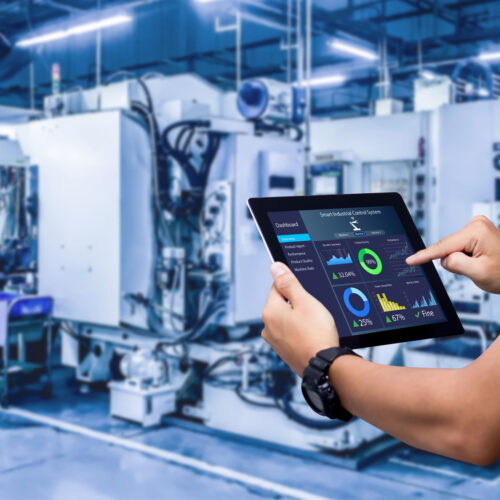The Importance and Benefits of Real-Time Monitoring
In today’s fast-paced world, where data flows continuously and decisions need to be made instantly, real-time monitoring has become a critical component for businesses and industries alike. But what exactly is real-time monitoring, and why is it so essential? This blog will delve into the importance of real-time monitoring and highlight its numerous benefits.
What is Real-Time Monitoring?
Real-time monitoring refers to the process of continuously observing and analyzing data as it is generated. This data can come from various sources such as sensors, network devices, software applications, and industrial machines. The main goal of real-time monitoring is to provide up-to-the-minute insights that enable immediate responses to any changes or anomalies.
The Importance of Real-Time Monitoring
- Instantaneous Decision-Making: In environments where conditions change rapidly, such as manufacturing or finance, the ability to make quick decisions based on the latest data is crucial. Real-time monitoring provides the most current information, allowing businesses to act swiftly and stay ahead of potential issues.
- Enhanced Operational Efficiency: By constantly monitoring systems and processes, real-time monitoring helps identify inefficiencies and bottlenecks. This continuous oversight allows businesses to streamline operations, reduce waste, and improve overall productivity.
- Improved Safety and Compliance: In industries like healthcare, energy, and transportation, real-time monitoring is essential for maintaining safety standards and regulatory compliance. Continuous data monitoring ensures that any deviations from safety protocols are immediately detected and addressed, preventing accidents and ensuring compliance with industry regulations.
- Proactive Problem Solving: Rather than reacting to problems after they have occurred, real-time monitoring allows for proactive problem-solving. By identifying potential issues before they escalate, businesses can take preventive measures to avoid downtime, reduce maintenance costs, and enhance the reliability of their systems.
- Customer Satisfaction: In customer-centric industries, such as retail or online services, real-time monitoring can significantly enhance customer satisfaction. By monitoring customer interactions and feedback in real-time, businesses can quickly address concerns, provide immediate support, and tailor their services to meet customer needs more effectively.
Benefits of Real-Time Monitoring
- Increased Responsiveness: Real-time monitoring enables organizations to respond to incidents and changes as they happen, minimizing the impact of potential issues. This increased responsiveness is particularly beneficial in emergency situations where timely actions can prevent disasters.
- Data-Driven Insights: Continuous data collection and analysis provide valuable insights into trends and patterns that might not be evident through periodic monitoring. These insights can inform strategic decisions, optimize resource allocation, and drive innovation.
- Cost Savings: By identifying and addressing issues early, real-time monitoring can lead to significant cost savings. Preventive maintenance, reduced downtime, and optimized operations all contribute to lower operational costs and higher profitability.
- Enhanced Security: Real-time monitoring plays a vital role in cybersecurity by detecting suspicious activities and potential threats as they occur. This allows organizations to take immediate action to mitigate risks and protect sensitive data.
- Better Resource Management: With real-time visibility into resource usage, businesses can optimize their resource management strategies. This leads to more efficient use of materials, energy, and human resources, ultimately improving sustainability and reducing waste.
Real-World Applications
- Manufacturing: Real-time monitoring in manufacturing allows for the continuous tracking of production lines, machine performance, and product quality. This helps in maintaining high production standards, reducing defects, and minimizing downtime.
- Healthcare: In healthcare, real-time monitoring of patient vitals, medical equipment, and environmental conditions ensures that patients receive timely and appropriate care. It also helps in managing medical inventories and ensuring the availability of critical supplies.
- Finance: Financial institutions use real-time monitoring to track transactions, detect fraudulent activities, and analyze market trends. This enables them to provide secure services and make informed investment decisions.
- Transportation: Real-time monitoring of vehicles, traffic conditions, and logistics processes improves route planning, reduces fuel consumption, and enhances delivery accuracy in the transportation industry.
- IT and Networks: In the IT sector, real-time monitoring of network performance, server health, and application status ensures seamless operations and quick resolution of technical issues.
Conclusion
Real-time monitoring is an indispensable tool in today’s data-driven world. Its ability to provide instant insights, enhance operational efficiency, ensure safety and compliance, and improve customer satisfaction makes it a valuable asset for any organization. By leveraging real-time monitoring, businesses can stay ahead of the curve, proactively manage their operations, and drive continuous improvement.




